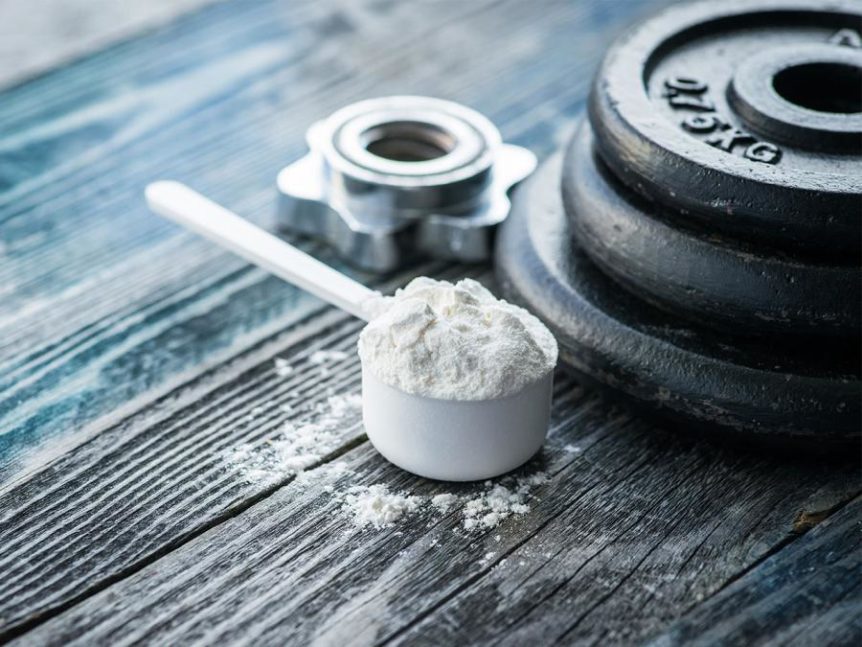
Always speak to a qualified, knowledgeable healthcare provider for guidance before starting any supplement regimen.
“[Creatine Monohydate] appears to be the most effective nutritional supplement currently available in terms of improving lean body mass and anaerobic capacity.” – Thomas Buford and colleagues in a position statement and review of available research back in 2007.
Average performance improvement over 4 weeks of creatine supplementation can be 5-15% in maximal power, strength, and total work performed, 1-5% in sprint speed, and 2-4 pound increases in lean body mass.
Creatine can make a big impact for those looking for that extra edge…or it can be a huge waste of money – an investment in expensive urine. It all comes down to how you take it and what you take it for.
Creatine is a compound that is naturally synthesized by our bodies from the amino acids glycine, arginine, and methionine. You also consume creatine when you eat meat, which contributes to creatine stores in your body; this is why vegetarians often exhibit lower muscle creatine stores and stronger performance impacts from creatine supplementation than their non-vegetarian counterparts.
Creatine serves as an energy storage system in our bodies. ATP (adenosine triphosphate) – our cells’ energy currency – is made on demand and not stored in cells in significant amounts. But, sometimes our cells need energy immediately – think swinging a baseball bat or running from a bear, whichever seems more applicable to you. Good thing our muscle cells can store high-energy phosphates on creatine, as creatine-phosphate, to have a quick (albeit small) supply of phosphates to rapidly make ATP.
So, the more creatine in your cells, the more quick energy you can store. And, the more you can store, the more you have on hand to support fast, powerful movements.
All the way back in the early 1900s, scientists discovered that ingesting creatine in larger than normal amounts can increase muscular stores (by 10-40%) and, thus, power performance.
But, is creatine safe?
The compound? Yes. Certain creatine supplements? It depends.
Remember the old adage: poison is in the dose – that is, even drinking water in great enough amounts CAN kill you. Living by “if some is good, more is better” will destroy your performance and health.
(Note: Creatine is not indicated for those with certain health conditions, especially certain kidney- and liver-related conditions due to the possibility of increased stress on those organs.)
Contrary to old theories, in healthy individuals, numerous studies have confirmed that proper creatine supplementation does not increase the risk of dehydration, cramping, or kidney disease. It may even provide mild protection against injury.
Two well-substantiated protocols exist for supplementing with creatine.
Supplementation consistency is crucial since you are trying to build up stores in your body. You don’t get that boost from a one-time use. So just taking it a few times each week, or whenever you remember, isn’t going to cut it.
The first protocol consists of what is called a loading phase for 3-5 days to saturate the muscle tissue: 15-20 grams of creatine (0.3 grams per kilogram body weight or 0.15 grams per pound body weight) is taken throughout the day in 5-gram portions. Doses beyond 5-6 grams at a time may lead to diarrhea or nausea and are to be avoided. Then a maintenance phase is initiated of 3-5 grams creatine taken each day.
The second protocol consists of simply taking 3-6 grams of creatine each day for the duration of the supplementation protocol. This method provides a gradual increase in muscle-creatine levels.
1-2 grams of creatine, like is found in many pre-workout supplements, isn’t going to cut it for you.
Creatine is best absorbed when taken with carbohydrates around workouts, like mixing it with 3-6oz of fruit juice, 15-30 minutes before a workout. Taking creatine after a workout, for example with chocolate milk, is also highly effective.
Not all creatine formulations are created equal. Creatine Monohydrate is the most studied form of creatine, the most affordable, and has substantial evidence backing its effectiveness. Be wary of other forms, and don’t fall victim to a salesman at a supplement store quoting a study and pushing some product they need to get rid of that month.
While supplements are ‘regulated’, the FDA does not have the manpower to keep up with all of the supplements in the marketplace, so most go untested. Of those supplements and supplement manufacturers audited by the FDA, 69% showed compliance issues including the presence of adulterants in the supplements (contaminants, non-approved chemical ingredients, or pharmaceutical drugs) and failure to test the raw materials they were using. This is one of the most common ways that college and professional athletes get “popped” for performance enhancing drugs...not to mention that safety and health are huge concerns here as well.
Look for NSF certified for sport supplements, make sure you recognize every ingredient on the label, avoid secretive "proprietary blends,” and always ask a qualified, knowledgeable healthcare provider for help with supplements.